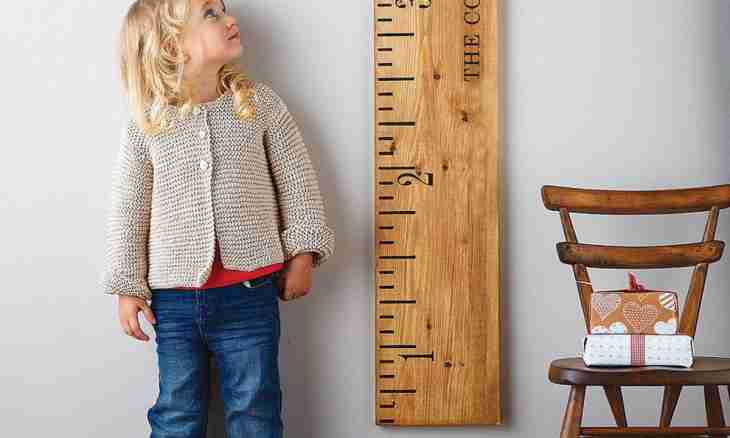Parents can monitor development of the children by means of constant measurement of growth and the child's weight. At a big variety of parameters of development of the child, the weight and growth are rather simple for measurement and at the same time rather informative for definition of existence of any given problems and diseases.
Concept norm in itself relatively therefore, speaking about norm on growth or weight, it is necessary to consider many factors: - heredity factors;
- for babies a type of feeding; - existence or lack of specific features of the state of health and so on.
The first what it is worth paying attention when determining norm of physical development, this uniform and proportional increase in growth and weight to. At the same time it should be taken into account that there are two periods of life of the child when there is a sharp jump on growth: infantile (in the first 12 months growth of the child can increase by 25 … 30 centimeters) and the period of puberty during which the increase on growth can make about 20 … 30 cm. For determination of norm of growth and weight there is a large number of special anthropometrical tables and formulas which are based on statistical data for a certain amount of time.
Growth formulas
- for children up to six months the norm of growth can be determined by a formula: 66 cm minus 2.5 cm for every month about half a year; - in 6 months growth of the child can be determined so: to 66 cm add 1.5 cm for every month after half a year; - up to four years a formula following: 100–8 * (4 – age advanced in years); - after 4 years it is possible to use a formula: 100+68 * (age advanced in years - 4).
Tsentilny tables
The World Health Organization developed special tables which comprise statistical data on key parameters of development, such as growth, weight and circle of the head of the child. In these tables of group on a vertical make age corridors, or "tsentit". All data are conditionally divided into seven intervals reflecting norm and deviations from it: - normal indicators are the parameters which are located in the averages groups, "below an average" and "above the average"; - when getting measurements into groups "low" and "high" it is necessary to understand that these characteristics of physical data are characteristic of a smaller part of children and can be referred to specific features of the child, not connected with any problems with health; - the data of the child getting on values into extreme groups "very low" and "very high" indicate possible problems and need of the request for consultation to experts.
